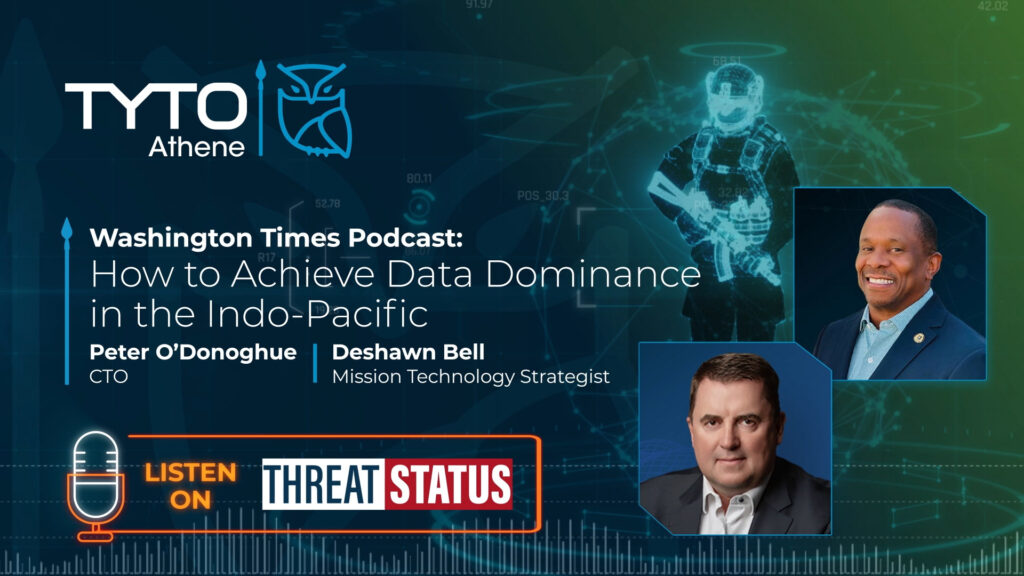On a recent episode of the Washington Times Threat Status podcast, Peter O’Donoghue, Chief Technology Officer at Tyto Athene, and Deshawn Bell, Mission Technology Strategist, discussed how the U.S. and its allies can achieve data dominance across the Indo-Pacific—addressing the “tyranny of distance,” simplifying mission-partner collaboration, and leveraging AI to enhance mission decision-making.
“Data dominance means knowing what data you have, trusting its quality, getting it in the right hands at the right time—and exploiting it for better, faster mission decisions,” said O’Donoghue.
Key Takeaways
- Defining data dominance: Understanding and trusting data, delivering it at the point of need, and exploiting it for more timely, informed mission outcomes.
- Synchronizing coalition operations: True data dominance means all partners share the same operational picture at the same time, ensuring commanders make coordinated, data-driven decisions.
- Overcoming the tyranny of distance: In the Indo-Pacific, transporting and synchronizing data across nodes in Japan, the Philippines, Hawaii, and Alaska requires resilient networks and interoperable technologies.
- Building resilience through automation: Designing islands of automation allows systems to operate when disconnected, while integrating undersea, satellite, and 5G assets into a seamless, zero-trust network.
- AI as a mission enabler: AI accelerates sensemaking through image and video analysis, automates data tagging and access control, and acts as an “orchestrator of orchestrators”—pivoting to alternate transport paths when networks are disrupted.
O’Donoghue and Bell emphasized that the ability to securely connect, share, and act on mission data will define future readiness across the Indo-Pacific and beyond. Through innovation in networking, automation, and secure data exchange, Tyto Athene continues to help defense organizations strengthen their digital advantage and mission success.
Listen to the full episode:

